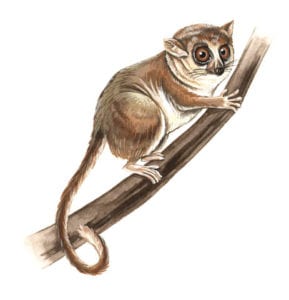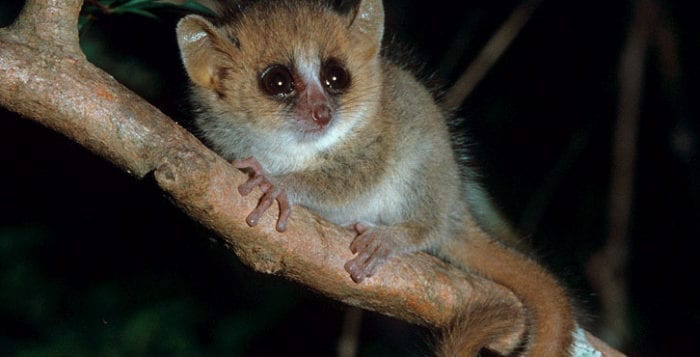Life Lines: Tracing my distant ancestors back 56 million years
By Elof Axel Carlson

In 2016 a 54.5-million-year-old set of some 25 bones were unearthed in Gujarat, India. They belonged to the closest ancestor of all primates that lived about 56 million years ago. One branch of that ancestor produced the lemurs, lorises and an extinct group of adapoids. A longer branch produced the tarsiers and an extinct group of omomyids. Even more recently from that tarsier branch came the New World monkeys, followed by the Old World monkeys and most recently the apes and humans. The Gujarat primate has bones that are like a mixture of the lemurlike and monkeylike lineages.
The primates arose from an earlier line of dermopterans, and they in turn came from a line of tree shrews. The dermopterans are represented by a nearly extinct line of flying mammals that superficially look like bats but that differ in their mode of flight. They have a flap of skin that serves as a gliding organ, and they can glide about 200 feet from tree to tree in a forest. They are not good climbers, lack opposable thumbs and are nocturnal. Their diet consists of fruits, leaves and sap.
One species lives in the Philippines. They are called by their popular name, colugos. Colugos are unusual in the trade-offs they have made in adapting to the rain forests in which they live. They gave up the marsupial pouch as they shifted to the placental pregnancies of mammals, but like marsupials, the colugo babies are born immature and are shielded by their mothers for about six months in the skin flaps that serve as both gliders and a pseudopouch.
We humans (Homo sapiens) can decide which of our ancestors to call human. The Neanderthals and Denisovans are our closest ancestors, and we acknowledge that they shaped tools, lived in communities and even bred with us, leaving behind as much as 3 percent of their genes in our genomes in many parts of the world.

Less human in appearance are Homo erectus and Homo habilis. All of these walked upright, unlike apes. Their skeletons are more humanlike than apelike. The very fact that they could reach reproductive age and survive tells us they knew how to shape the environments in which they lived or extract from them the protection, food and materials needed for their survival.
Humans are remarkable in their plasticity of opportunities. They can migrate to frigid arctic or antarctic climates or live in deserts, in high altitude or sea level, in four seasons or one.
As a geneticist I am aware that the contribution of any one of my Homo sapiens ancestor’s genes some 200,000 years ago had a low probability of remaining in contact with its neighboring genes, and in all likelihood those genes in me are from virtually all of the individuals alive then.
When we do genealogy, assuming four generations per century, it only takes 2,000 years for any one of those ancestors in our family history to have less than 1 percent of our genes. If we are lucky (like royalty) to have records of our ancestors going back to the Middle Ages, we would likely find ourselves related to everyone in an ancestral region (a person like me whose father was from Sweden would be related to virtually every Swede in the age of the Vikings a little over 1,000 years ago).
In many ways our past genetic heritage is like the history of my Montblanc fountain pen, which was given to me by my students at UCLA in 1968. In the 40 years I wrote with it, I sent it to be repaired dozens of times either because I dropped it or a part wore out. Each time my pen came back looking new. I still think of it as the 1968 gift, but I doubt if there is any part that is still of the original pen given to me then.
This makes it unlikely that there is a genetic basis for behavior traits in a family that can go through more than 10 generations. The processes of shuffling genes every time we make eggs or sperm breaks up whatever cluster of genes we wish to assign to a human behavior. This is good because the genes of conquerors were spread widely while they held power, but having one of Ivan the Terrible’s genes or Genghis Khan’s genes would not make us a predatory monster in our relations with others. We inherit genes, not essences. If there is a mark of Cain, it is not engraved in our genes.
Elof Axel Carlson is a distinguished teaching professor emeritus in the Department of Biochemistry and Cell Biology at Stony Brook University.







